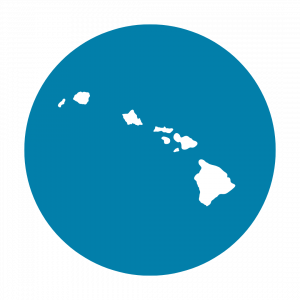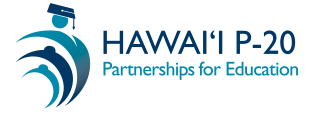Best Practices for Strategy Implementation
Overview
Resources on best practices to assist with the implementation of strategies related to the five priority areas of Hawaiʻi State CTE Plan: Equity & Access, Quality & Pathways Alignment, Partnerships, College & Career Navigation, and A Native Hawaiian Sense of Place.
 Priority: Equity & Access
Priority: Equity & Access
Resources:
- Series: Maximizing Access and Success for Special Populations in Career and Technical Education: A collection of briefs from Advance CTE and the Association for Career and Technical Education (ACTE) that explores definitions, strategies and guiding questions for supporting each of the nine special populations as defined by Perkins V as well as learner groups who, while not special populations under the law, may need additional supports to enroll and succeed in CTE.
- Engaging Families and Communities to Support Special and Underserved Populations in CTE: Describes examples of CTE and career development programs doing promising work in family engagement with examples from Arizona, Hawaii, Nevada, Ohio and Rhode Island.
- The Power of Micromessages in Marketing, Recruitment, and Success in CTE: A feature from the National Alliance for Partnerships in Equity (NAPE) on messaging strategies for the recruitment of underrepresented populations in CTE. Additional resources available at napequity.org.
Best Practices Examples in Hawaiʻi:
- Maui Economic Development Board (MEDB) prioritizes increasing representation of women in STEM pathways, such as through Code.org and Introduce a Girl to Engineering Day.
 Priority: Quality & Pathways Alignment
Priority: Quality & Pathways Alignment
Resources:
- Projected Listing of HIDOE CTE Program Offerings: For reference, the Hawaiʻi Department of Education (HIDOE) provides a 2024-2025 projected listing of CTE pathways and programs of study offered in each HIDOE high school. Updated projected listings are posted annually on the HIDOE website.
- Advisory Boards: Lessons in Collaboration: Principles in the Governance of an Industry Advisory Board: This brief from the Association of Career and Technical Education (ACTE) reviews the research on industry advisory boards and provides recommendations for developing an industry advisory board.
- CTE Professional Development: A variety of professional development opportunities are available to Hawaiʻi CTE educators. Below are some of the entities that offer CTE professional development in Hawaiʻi.
- General CTE Topics:
- Hawaii ACTE – Offers an annual conference and other professional development opportunities.
- UH Community Colleges Continuing Education – Search non-credit courses available through the UHCCs.
- HIDOE Office of Curriculum & Instructional Design – The Office of Curriculum & Instructional Design provides CTE-related professional development opportunities for HIDOE educators.
- Technology:
- Pacific Center for Advanced Technology Training (PCATT) – Offers a variety of Advanced Technology courses that may be of interest to IT educators.
- Maui Economic Development Board – Offers Code.org curriculum and various technology-based PD opportunities.
- Healthcare:
- Healthcare Association of Hawaii – Offers various PD opportunities for healthcare educators.
- General CTE Topics:
- Educator Recruitment & Retention: ACTE Teach CTE Repository: Highlights promising programs and practices around the CTE educator pipeline, including reports, articles and other resources.
- Dual Enrollment: Intentional Acts of Dual Enrollment: State Strategies for Scaling Early Postsecondary Opportunities in Career Pathways (Advance CTE): Offers best practices for designing strong statewide policies for removing barriers for participation in EPSOs in post-secondary credential and degree programs that lead to high-skill, high-wage and in-demand careers.
- Integration of Academic & Technical Education: Examples of strategies to integrate academic subjects in CTE include:
- Data Analysis: Hawaiʻi provides the following CTE data reporting tools for HIDOE and the UH Community Colleges:
- LEI System (HIDOE)
- Annual Report of Program Data (UH Community Colleges)
Best Practices Examples in Hawaiʻi:
- Honolulu Community College maintains robust industry engagement on their CTE Program Advisory Committees, and recently developed a handbook on best practices for advisory committee creation and management.
 Priority: Partnerships
Priority: Partnerships
Resources:
- Work-Based Learning:
- Hawaiʻi Work-Based Learning Framework: The Hawai‘i WBL framework is a resource created with key partners involved in providing and growing high-quality work-based learning WBL experiences for students.
- WBL Tracker: This WBL tracker, developed by the National Career Academy Coalition (NCAC), provides a sample checklist of WBL and college & career readiness activities progressing from 9th grade through 12th grade.
- ClimbHI Bridge: A portal built to connect Hawaiʻi educators and businesses through streamlined communication.
- STEMworks: Maui Economic Development Board’s STEMworks program offers various work-based learning resources including internships and curriculum resources.
- Career Academies:
- National Career Academy Coalition Services: The NCAC offers a variety of services for existing and emerging career academies. Free Academy Rubrics are available to download on their website.
- Hawaiʻi Academies (HA): Hawai‘i Academies (HA) is a partnership between twenty-seven Hawaiʻi State Department of Education (HIDOE) high schools seeking to improve educational outcomes by implementing smaller learning communities (SLCs).
- State & Local Partnerships:
- Strengthening Career Pathways Through the Power of State and Local Partnerships: This brief elevates five key components of strong state and local partnerships, exploring initiatives in Colorado, Hawaiʻi, Nebraska and Tennessee.
- Sector Partnerships: Industry-led, community-supported collaboratives that strengthen local economies and prepare and connect Hawaiʻi’s young people to careers in in-demand industries.
Best Practices Examples in Hawaiʻi:
- Honolulu Community College offers early college initiatives in areas such as automotive technology and welding in partnership with the HIDOE. They also host a Summer CTE Academy that offers high school students the opportunity to experience various career and technical education programs offered at Honolulu Community College.
 Priority: College and Career Navigation
Priority: College and Career Navigation
Resources:
- Hawaiʻi College & Career Navigators: The Hawaiʻi College & Career Navigators site is a repository of college and career exploration resources for counselors to utilize with their students. It includes guidance on career exploration, college enrollment, employment, and enlisting in the military service.
- Hawaiʻi Career Pathways: Hawaiʻi P-20’s Career Pathway Maps show students in various CTE programs of study how to get from high school to post-secondary or employment.
- College, Career & Community Readiness (CCCR) Expectations Guide: Provides a suggested continuum of grade-level benchmarks or outcomes to help prepare middle, high school, and college students for life success. The CCCR Expectations Guide can be utilized as a template for individual school complexes to develop their own customized benchmarks and outcomes.
- Hawaiʻi Career Explorer: Hawaiʻi Career Explorer offers a variety of tools for students to discover careers that match their interests, skills, and lifestyle, including:
- RIASEC: A theoretical vocational survey based on personality types to match career possibilities.
- Lifestyles Survey: Exercise to see how much your lifestyle might cost.
- Interests to Occupations: Select your interest and see a list of potential occupations that match.
- Career Clusters Test: A career guidance tool that allows learners to respond to questions and identify the top three Career Clusters of interest based on their responses.
- Find an Occupation: Find current labor market information about a particular occupation in Hawaiʻi, including number of jobs, job growth, salary range, and top companies hiring using different search parameters like skills, job titles, college major, etc.
- Issue Brief: Hawaiʻi Counseling & Advising: This issue brief provides an overview of Hawaiʻi P-20’s counseling and advising projects from 2017-2021, along with best practices and policy recommendations. Current counseling & advising projects for counselors and educators to explore include:
- College, Career & Community Readiness (CCCR) Webinar Series & Summit: Find upcoming events at hawaiip20.org/events.
- Next Steps to Your Future: An initiative to help graduating seniors stay on track with achieving their post-high school plans.
- Career Advising Resource Collection Sheet: A repository of resources from Advance CTE on career exploration, guidance and readiness.
Best Practices Examples in Hawaiʻi:
- The HIDOE Kailua-Kalaheo Complex developed a customized College, Career & Community Readiness (CCCR) Expectations Guide for their complex through a grant from Harold K.L. Castle Foundation. This effort was championed by Kailua-Kalaheo Complex leaders with support from Hawaiʻi P-20 staff and an education consulting partner. Over the course of a year, this team created a scope and sequencing framework of CCCR activities and experiences by grade level, “soft” piloted the framework in schools, gathered feedback and revised the framework, and launched the full complex pilot in August 2024.
 Priority: A Native Hawaiian Sense of Place
Priority: A Native Hawaiian Sense of Place
Resources:
- Office of Hawaiian Education Hub: A resource hub from the Hawaiʻi Department of Education’s Office of Hawaiian Education, which includes information about Hawaiian Studies, Kaiapuni, and Nā Hopena Aʻo. Support resources are also available for ʻōlelo Hawaiʻi (Hawaiian language learning and usage), ʻike kuʻuna (traditional Hawaiian worldview), and honua (place-based knowledge and practice)
- Nā Hopena Aʻo (HĀ) Framework: Identified by the Board of Education as the core values of Hawaiʻi’s education system, this framework guides in the development of skills, behaviors and dispositions that are reminiscent of Hawaiʻi’s unique context; and honors the qualities and values of the indigenous language and culture of Hawaiʻi. Training and support are available for schools upon request via google form.
- ʻĀina Aloha Competencies: A tool intended to help educators design for Hawaiʻi content by integrating ʻŌlelo Hawaiʻi (Hawaiian Language), Kuanaʻike (Worldview) and Honua (Place) into curricular content. Training and support are available upon request via google form.
- Community-Based Organizations: The Office of Hawaiian Education offers a list of community-based organizations throughout the state that may offer opportunities such as community workdays or other professional development opportunities for students and educators.
- Additional Resources on A Native Hawaiian Sense of Place:
- This Land is my Land: The Role of Place in Native Hawaiian Identity by Shawn Malia Kanaʻiaupuni & Nolan Malone
- Kanaka ʻŌiwi Methodologies: Moʻolelo and Metaphor: A collection of “methods-focused” essays written by kanaka scholars across disciplines. Particularly, Maya L. Kawailanaokeawaiki Saffery’s essay “He Ala Nihinihi Ia A Hiki I ka Mole: A Precarious Yet Worthwhile Path to Kuleana Through Hawaiian Place-Based Education” shares a moʻolelo of a journey to kuleana through Hawaiian place-based education.
- ʻO Ka ʻĀina, Ka ʻŌlelo, a me Ke Kaiāulu: Article written by Kanoelani Nāone for Hūlili, vol. 5 in which she “describes Hawaiian cultural practices and beliefs related to land, language, and community.”
- Nā Honua Mauli Ola: ʻIke Honua Pathway on pages 77-83 of this book speaks to the importance of having “…a strong sense of place, including a commitment to preserve the delicate balance of life and protect it for generations to come.”
- Culturally-Sustaining Strategies: Place-Based Education: This brief provides an overview of PBE, best practices and examples, a description of PBE initiatives in Hawai‘i, and examples of PBE programs and projects for indigenous students.
Best Practices Examples in Hawaiʻi:
- Honolulu Community College’s Hulili Ke Kukui Hawaiian Center offers a variety of student services and resources, including a student lounge and study space, cultural enrichment workshops, a computer lab and printing, and advising with support from a Native Hawaiian Counselor. Their Native Hawaiian-serving programs include Poʻi Nā Nalu, which provides culturally appropriate opportunities for academic and professional success, and Ola Niuhelewai, which aims to increase educational attainment and improve personal health and well-being. They also offer Hawaiian Culture-Based Professional Development opportunities for educators.

